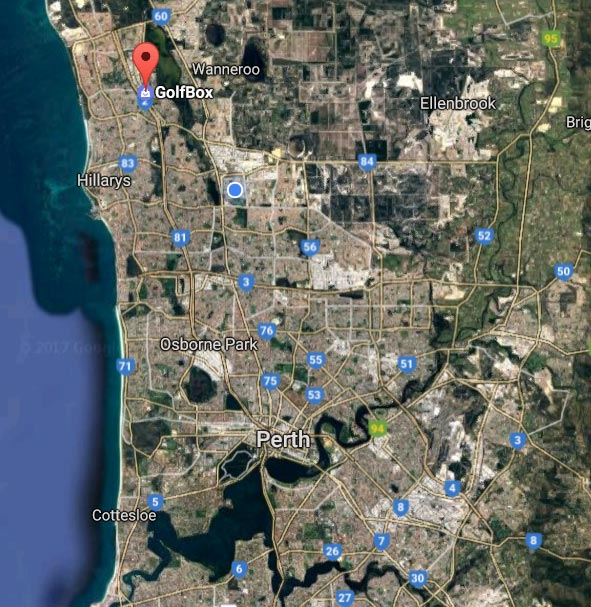Flexible HVAC Design For A Major Retail & Office Redevelopment

Located in Joondalup, this redevelopment of a former Bunnings Warehouse into a new home for Golf Box involved a complete transformation of the site into specialty retail and commercial office tenancies. Froster Engineering was engaged to deliver a smart, efficient mechanical services design that would accommodate a large-format showroom and golf simulation space, while also supporting future tenant reconfiguration.
Performance-led HVAC strategy
The mechanical design required careful consideration to meet Section J energy performance requirements of the National Construction Code (NCC), while also ensuring flexibility for both the Golf Box fitout and potential future changes to the building layout.
A key part of our approach was the separation of the building into two distinct mechanical zones:
- The Golf Box showroom and simulation areas, which required comfort cooling with high ceiling volume and varying occupancy loads
- The remaining lettable area, which needed a future-proof HVAC infrastructure that could adapt to unknown tenancy types
We implemented a reverse cycle air conditioning solution for the Golf Box area, sized appropriately to manage thermal loads from equipment, people, and lighting. For the remaining lettable area, we designed a default base-build evaporative cooling system, chosen for its energy efficiency, low running cost, and adaptability to warehouse-style layouts.
Evaporative cooling performance
To maximise energy efficiency, we specified Indirect Evaporative Cooling (IEC) systems. These systems use the Maisotsenko Cycle, which captures clean psychrometric energy found naturally in the atmosphere to cool incoming air without adding moisture. This allows the system to operate with a very high Coefficient of Performance (COP) of up to 12:1, compared to around 4.5:1 for conventional VRV systems.
This means the system can provide up to 15% of the building’s cooling load using a fraction of the power required by typical mechanical cooling. The IEC units also deliver 100% fresh air, improving indoor air quality and supporting compliance with NCC ventilation requirements.
Flexibility for future use
One of the key design challenges was ensuring the lettable area HVAC system could adapt to future tenancy configurations without needing complete redesign. We achieved this by implementing:
- High-level ductwork reticulation that can be easily tapped into by future fitouts
- Zoning separation between Golf Box and other areas to allow independent system control and metering
- Base-build flexibility, with scalable evaporative systems that can be enhanced or upgraded as needed
Engineering oversight and delivery
Froster Engineering remained involved through construction, advocating for our design and working closely with the builder and contractor team to:
- Manage on-site coordination and installation quality
- Ensure the system met both design intent and operational efficiency goals
- Support practical completion and handover of a high-standard mechanical installation
The result
The HVAC solution for Golf Box Joondalup achieves a smart balance between performance, cost-efficiency, and flexibility. Reverse cycle systems serve the immediate showroom and simulation zones, while the broader building is supported by highly efficient IEC systems designed to future-proof the space.
With clear zoning, high-efficiency cooling, and forward-thinking design, the system is well equipped to support both current tenant needs and future adaptability – all while exceeding energy and ventilation compliance requirements.




.webp)